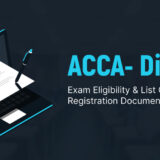As we had seen in the previous blog, that mergers and acquisitions are becoming more and more common as entities aim to achieve their growth objectives. IFRS 3 / Ind AS 103 provides a detailed guidance on accounting for business combinations. Upon recognising identifiable net assets acquired in business combination, their measurement is critical issue which shall be based on the purchase price allocation. Few practical challenges in measuring the net assets are discussed below:
Measurement of acquired net assets
IFRS 3 / Ind AS 103 requires identifiable assets acquired and liabilities assumed to be measured at their acquisition-date fair values. The acquisition date fair value will be deemed as cost. Fair value is defined as the amount that would be received to sale an asset or would be paid to transfer a liability, in an orderly transaction between market participants on a measurement date.
The fair value of identifiable assets acquired and liabilities assumed in a business combination will be different from their carrying amounts in the acquiree’s financial statements. This gives rise to fair value adjustments in accounting for the business combination. Fair value is based on the concept of a hypothetical market participant, rather than being specific to either the acquirer or the acquiree.
Practice Statement
In practice, in Indian scenario, ‘Registered valuer’ will undertake the exercise of fair valuation of acquired assets and assumed liabilities. Generally, fair valuation report is required for three different categories of assets separately:
1. Land and building
2. Plant and machinery
3. Financial instruments (including financial liabilities)
Registered valuer prepares and provides a report, commonly known as Purchase Price Allocation (PPA) report. This report provides the fair values of all the acquired assets and liabilities, including intangible assets identified separately from goodwill which can be used for accounting purposes by the acquirer. PPA report also contains calculation of Non-Controlling Interests (NCI), goodwill or capital reserve.
Common challenges faced practically in measuring fair value are as under:
Whether the acquirer’s intention to use the non-financial asset or its classification in balance sheet should match with the market participants intention?
No. The standard does not exempt an entity from measuring an asset acquired at the fair value based on market participants’ “highest and best use” of the non-financial asset. This is because acquirer is required to calculate fair value which is market participant’s perspective with respect to that asset and it is not value specific to the entity based on its specific use. The entity may not intend to use that asset or intends to use it in a way that is not the highest and best use from market participants’ perspective. Therefore, such assets are recognised at fair value by reference to the “highest and best use” of market participants, rather than based on the way in which the acquirer intends to use them.
Whether uncertain cash flows with respect to an acquired asset (financial or non-financial) are required to be adjusted by way of valuation allowance / impairment loss in the acquisition date fair value of that asset?
No, uncertain cash flows are not required to be adjusted in the assets fair value. An acquirer is not permitted to provide for a separate valuation allowance i.e. expected credit loss / impairment loss as of the acquisition date for assets acquired in a business combination that are measured at their acquisition-date fair values. Because the effects of uncertainty about future cash flows are included in the fair value measurement. For example, because IFRS 3 / Ind AS 103 requires the acquirer to measure acquired receivables, including loans, at their acquisition-date fair values, the acquirer does not recognise a separate valuation allowance for the contractual cash flows that are deemed to be uncollectible at that date.
Whether acquisition date fair values of PPE / Intangible assets / Investment property are to be considered as gross block or net block and accumulated depreciation required to be determined separately?
No. Acquisition date fair value is considered or deemed as cost as on the date of acquisition. Thus, fair values as on acquisition date are considered as gross block for the assets. Acquirer is not required to consider accumulated depreciation block separately to be deducted from cost.
Practice Statement
However, in practice, most of the time incremental value of assets (based on PPA report) is considered in gross block in addition to original carrying value and incremental depreciation is provided based on remaining useful life in addition to the existing
depreciation.
Recognition and measurement of special assets
Reacquired rights
These are the rights which the acquirer before acquisition may have granted to the acquiree to use certain assets which belong to the acquirer. It does not matter whether the asset was recorded in the financial statement of the acquirer or not, if the asset is reacquired as a part of business combination, it will be recognised as asset in the books of acquirer.
For example, license to use the brand name under franchisee rights etc. Such brand name is not recognised in the books of franchisor / acquirer. However, if acquirer / franchisor acquires an acquiree / franchisee who has recognised such franchisee rights as intangible assets in his books, then the acquisition transaction results in settlement of the right earlier granted to franchisee and accordingly reacquired rights will be recognised in the books of acquirer / franchisor.
The acquirer shall measure the value of a reacquired right recognized as an intangible asset on the basis of the remaining contractual term of the related contract without considering the effect of potential renewals.
Assets held for sale
The acquirer should measure an acquired non-current asset (or disposal group) that is classified as held for sale at the acquisition date at its fair value less costs to sell.
Deferred tax assets arising out of unused tax credits of acquiree (not recognised by acquiree)
IFRS 3 / Ind AS 103 requires the acquirer to recognise and measure deferred tax assets or liabilities and liabilities in accordance with IAS 12 / Ind AS 12: Income Taxes.
Whether acquirer can “initial recognition exemption” for recognising deferred taxes on temporary differences arising from fair value differences and from initial recognition of assets or liabilities acquired in business combination?
No. Initial recognition exemption cannot be availed for the temporary differences arising in business combination transaction. Acquirer shall recognise the deferred tax consequences with respect to the temporary differences that arises due to initial recognition of assets and liabilities acquired in business combination and due to fair value measurement of net assets acquired in CFS. However, no deferred tax consequence should be recorded on initial recognition of goodwill.
Whether recognition of ‘deferred tax asset’ is to be reassessed in business combination accounting?
The acquired entity may not have recognised a deferred tax asset in respect of its past tax losses or from deductible temporary differences due to uncertainty in future taxable profits. However, as a result of acquisition, acquirer may determine entity will have sufficient future taxable profits to realise the tax benefits. Accordingly, a deferred tax asset attributable to the unused tax losses or on deductible temporary difference is recognised as an acquired asset in the business combination accounting.
However, if the circumstances that gave rise to the recovery of the benefits becoming probable arose after the date of the business combination, the deferred tax is recognised in profit or loss and not through business combination accounting.
Indemnification assets
The seller in a business combination may contractually indemnify the acquirer for the outcome of a contingency or uncertainty related to all or part of a specific asset or liability. For example, the seller may indemnify the acquirer against losses above a certain amount on a liability arising from a particular contingency, such as legal action or income tax uncertainty. As a result, the acquirer obtains an indemnification asset.
IFRS 3 / Ind AS 103 requires the acquirer to recognise an indemnification asset at the same time and measured using the same measurement basis as the liability. This ensures that both the asset and the liability are measured on a consistent basis using similar assumptions, subject to management’s assessment of collectability of the asset.
For example, ABC Ltd. is fully indemnified for any obligation arising from a contingent liability assumed in the acquisition of PQR Ltd. The fair value of the contingent liability recognised at the date of acquisition was INR 2 crores. Since there were no concerns about the collectability of the indemnification asset, ABC Ltd. also recognises an indemnification asset of INR 2 crores at the date of acquisition. Such asset and liability cannot be presented net.
Goodwill or gain on bargain purchase / capital reserve and acquisition of stressed businesses
While accounting for acquisitions of stressed businesses as per IFRS 3 / Ind AS 103, entities may face few practical challenges while calculating goodwill or gain or bargain purchase / capital reserve (under Ind AS).
In case of acquisition of stressed businesses, generally money infused by the acquirer is utilised by the acquiree to repay its existing debts and other liabilities and thus, cash infused by the acquirer remains in the acquired entity. Consequently, acquiree does not transfer his shares to the acquirer, however, control is provided to the acquirer by issue of additional equity shares in the acquiree company. As there is no outgoing shareholder, cash introduced by acquirer remains in the business as a part of net assets of the acquiree company. This results in increase in the net assets of the acquiree company as on the date of acquisition and consequently has impact on the calculation of goodwill / gain on bargain purchase or capital reserve.
Practice Statement
Practical data maintenance implications of acquisition accounting
Acquisition accounting based on PPA report has multiple impacts in maintaining the data of assets and liabilities acquired in combination and its subsequent measurement:
– The carrying values of acquired assets and liabilities in SFS after acquisition and value of the same assets and liabilities in CFS are significantly different. This leads to maintenance of separate books of accounts / records for the business combination accounting.
– Acquirer also is required to maintain separate track of the amortisation and impairment loss of such assets in CFS and also while disposing of such assets.
– Deferred tax is required to be computed for the temporary differences in CFS due to fair valuation of net assets acquired. Such deferred tax is adjusted as a part of goodwill on initial recognition.
Effects of acquisition accounting based on PPA report may lead to above mentioned burdensome data maintenance requirements which in our view can be resolved by creating a system of group reporting packs, using good consolidation software tools (if groups size is bigger), push-down accounting from parent entity etc.
FinPro Consulting specialises in IFRS / Ind AS accounting and reporting and has helped many of their clients in resolving complex accounting issues including accounting for business combination transactions, preparing consolidated financial statements for complex group structures etc. For more information on the subject you can get in touch with us at info@finproconsulting.in








